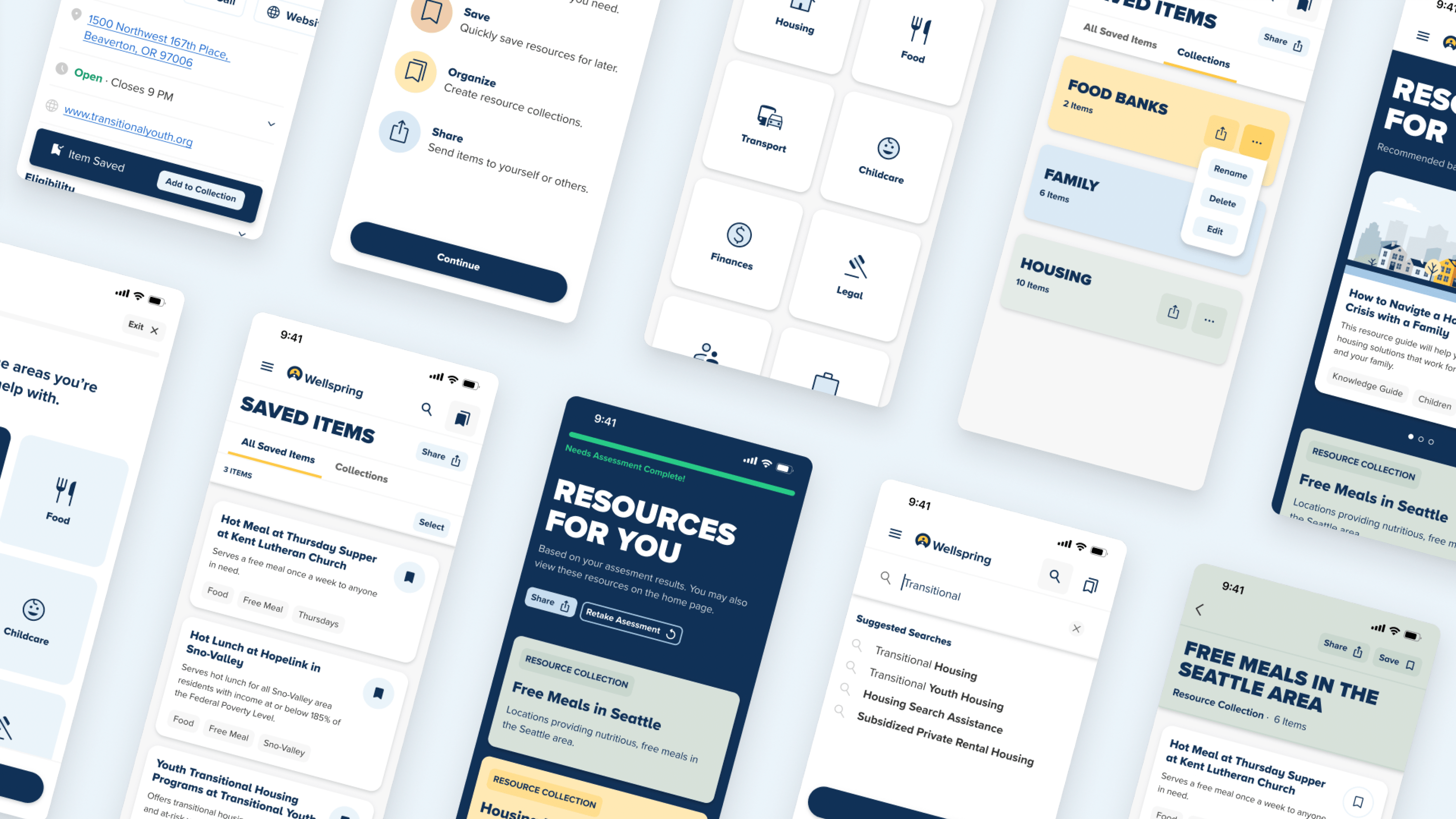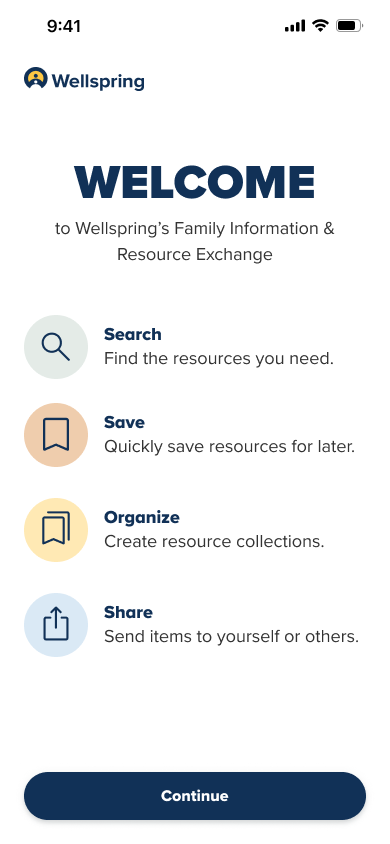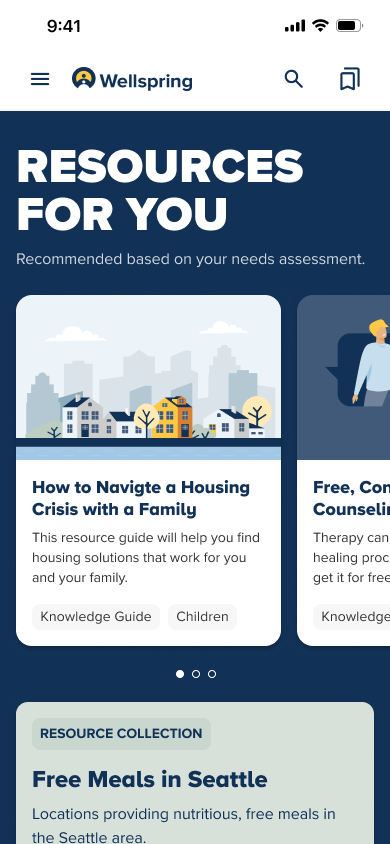
With hundreds of resources to look through during times of need, families often don’t know where to start or who will be able to help. In partnership with designers and researchers at BlinkUX, I created a high-fidelity prototype app to filter the noise, matching vital resources to people who need them when they’re needed most.
For the tens of thousands of families in Washington State alone facing homelessness, getting help can be a lot of work. Historically, they might have visited a church or community center, received information from a social worker, and been invited to look through a handful of brochures or make calls in the lobby. But with growing populations, ballooning need, and more specialized resources, it got harder to discover the right information. Americans at all socioeconomic levels also moved online, but social assistance organizations are unable to justify building user-friendly digital tools to advertise services. The information is out there, though, and Wellspring saw an opportunity to meet the need.
Meeting this need was a key strategic initiative – FIRE – being pursued by Wellspring leadership, but there was no budget to get started. I identified the need and vision for a deliverable of sufficient fidelity to build public enthusiasm and raise funds for development. To build momentum and unblock progress, I collaborated with Fundraising staff to apply for support from BlinkUX’s 10 week Pro Bono consultancy. Our application won the gift valued at $340,000 over 200+ applications in the pool.
For the project to succeed, we needed the resulting prototype to be:
Throughout the project, I supported the BlinkUX team as their primary internal contact and liaison. Since our primary Blink resources were junior designers and researchers, I also aimed to provide a meaningful, high-quality experience for them in their professional development. I was responsible for bringing diverse interests together, ensuring that Wellspring and the Blink project team worked well together. I involved myself early, kicking off the project with a storytelling presentation that energized the team and helped them hit the ground running.
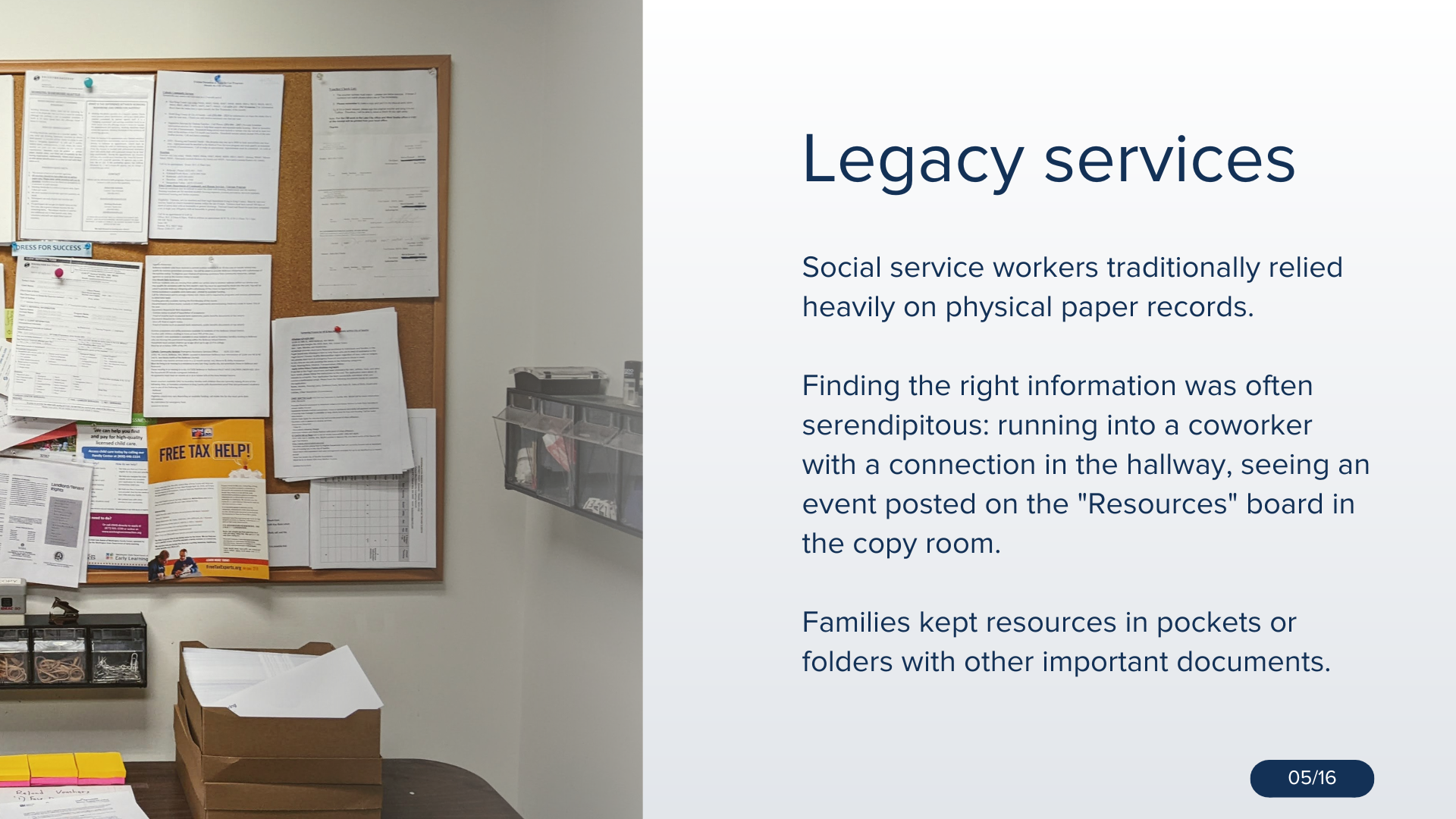
I drove success for this project with the following activities:
By gathering and documenting with vivid visual examples what the "current state" experience was, stakeholders entered into the project on common ground.
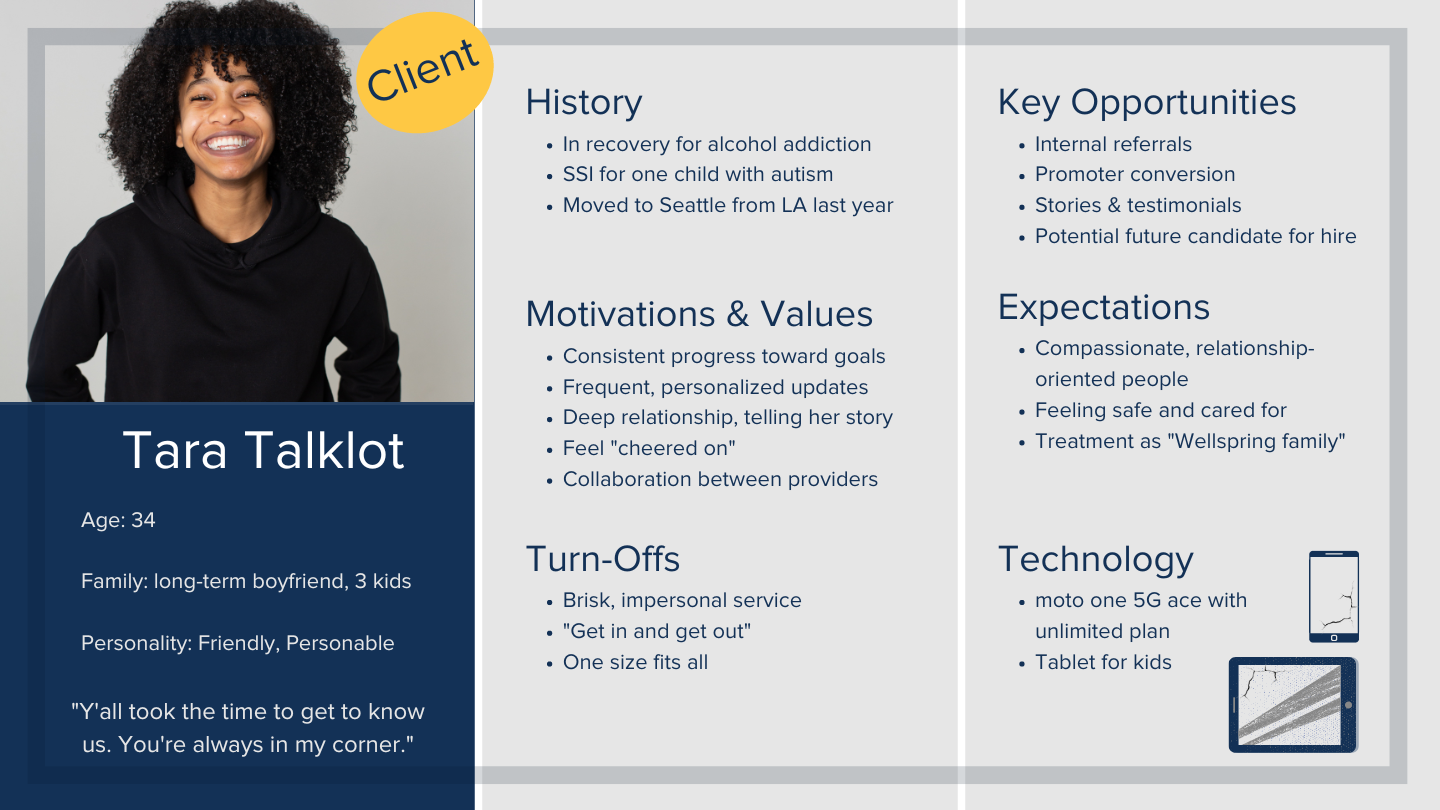
I developed detailed personas based on research findings to represent different user types, helping designers build empathy and context for target audience's needs.
I was responsible for recruiting and coordinating this highly non-traditional group of research participants for initial and evaluative user research. Because the demographic we were trying to reach is hard to recruit on platforms like UserTesting.com, we could not rely primarily on this medium for recruitment. Non-traditional methods involved reliance on informal networks through case managers, helping us identify individuals who had recent experiences of homelessness but were not in active crisis.
I also organized in-person and remote user research sessions, helping collect and incorporate feedback from participants, and ensuring timely delivery of all incentives.
As the only core member of the team representing Wellspring, I actively participated in weekly design reviews to ensure alignment between product design and strategic goals, collaborating with designers to refine the user interface and experience.
I collaborated with the Project Management and Design resources from Blink to synthesize findings from cross-stakeholder interviews to identify features for current and future design projects.
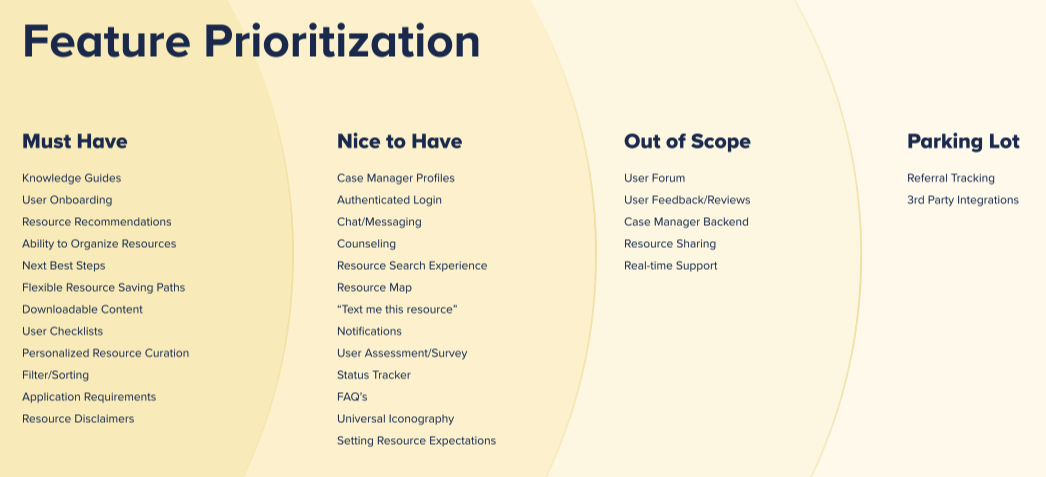
Since I had the most extensive context for the product and its target users, I was called on to represent the Voice of the Customer (VOC) periodically throughout the project where research was not present or detailed enough. This helped keep user needs and preferences priority throughout the design process.
As Product Manager, my role reported directly to the CTO for this project. Since our design team was non-technical, I represented implementation feasibility, driving trade-offs during feature evaluation.
For example, during initial user interviews, we discovered a core need to save and share resources, not just discover. However, we still had a firm “no” from our CTO to build an app that would require the cost of building and maintaining an authenticated platform. To meld these needs, I worked with the Interaction Designer to create a build solution leveraging cache, email, and text to satisfy the use case. The final design allowed users to send both individual resources and resource "Collections" to themselves or to friends and family. We also altered UI copy to help users understand what would and would not be saved, validating user acceptance in the next design cycle.
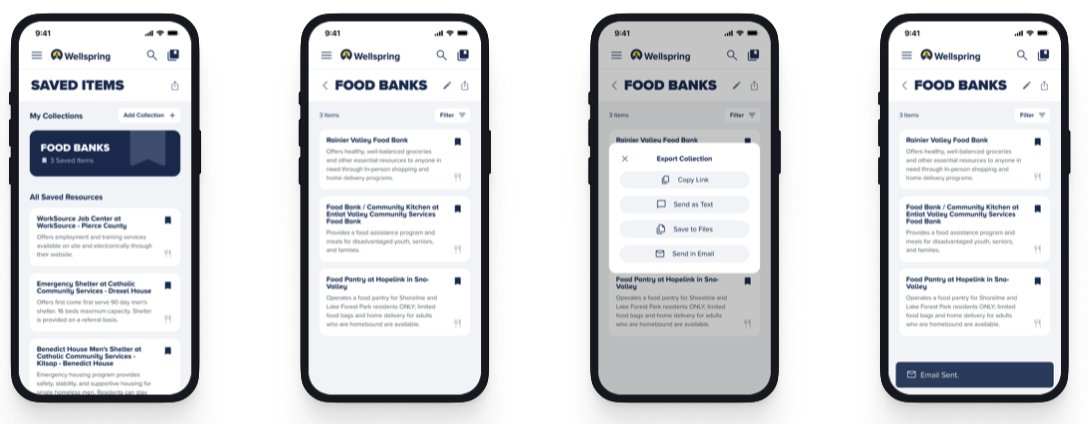
The BlinkUX prototype received overwhelmingly positive feedback during the validation stage. The evaluative research sessions provided clear evidence of the app’s potential impact and effectiveness:
8 out of 9 participants said they would highly recommend the app to friends or family, indicating strong user approval and satisfaction.
All 9 participants stated they would use the app if it were available today, demonstrating the immediate demand and perceived value of the solution.
The prototype was praised by leadership, as well as by several potential funders and development partners, for its innovative approach to addressing a critical need. Although the project’s next phase has yet to be funded, both the design and research findings have been recognized as a valuable contribution, demonstrating the potential for future development.
This project was a formative early experience in collaboration with designers and researchers as Product Manager. Given that I have several years of experience in both design and research, it was inspiring and thrilling to collaborate with both junior and senior specialists with more developed skills. This project also helped undergird for me the importance of early attention to viability. Had I the experience and awareness to pre-empt our design project with additional preparation for a hand-off to the execution phase, the value and potential of the experience we designed may have had a greater chance of making it to launch.
“This would honestly be great for people to have, like I want it now. It gives you more freedom to really focus in on one search, versus going on Google and it pulls up everything that’s not even relevant.” - Participant 5
“It’s gonna help a lot of people. Definitely eases the stress of trying to find the right resource.” - Participant 1
